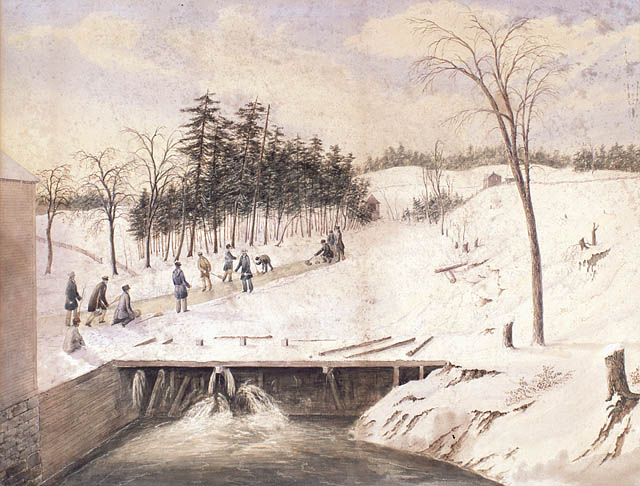 |
| William Dunlop, portrait by James Bowman, 1834 Royal Ontario Museum |
The man pictured here once stood inside a shop in Goderich, and asked a group of newly arrived settlers to each hand him some nails from a nearby barrel. If you were one of these settlers you might think this was some sort of symbolic gesture - nails for building a new home in a new land, etc. So you line up and reach into the barrel, as these settlers did, only to discover that this gentleman, William Dunlop, a respected doctor, 1812 war veteran, journalist, and Warden of Woods and Forests for the Canada Company, has teamed up with a friend to place a porcupine inside. Surprise!
This is pranking, 19th century style, and this wasn't the first or last time that Mr. Dunlop took part in a little schadenfreude. He once caused a fellow Canada Company official to be thrown from his horse in the woods after he, and the same accomplice from the porcupine incident, spooked it by howling like wolves. (Said official later recuperated with the dedicated care and attention of Mr. Dunlop and his liquor cabinet).
 |
| Porcupines are found all across Canada, and are generally not con- sidered to be, by any means, cuddly. |
Royal Ontario Museum 2014, Images
Dictionary of Canadian Biography Online 2014, "Dunlop, William"
Huron County Museum 2014, "Gairbraid"
Further Reading
History Today 2014, "Victorian Jokes: The best in 19th-century humour"
Today I Found Out 2014, "The Greatest Practical Joke of the 19th Century: The Berners Street Hoax"
If you'd really like to get into the subject of Victorian honour, you can always take a course at the University of Edinburgh, "We Are [Not] Amused: Victorian Comic Literature"





